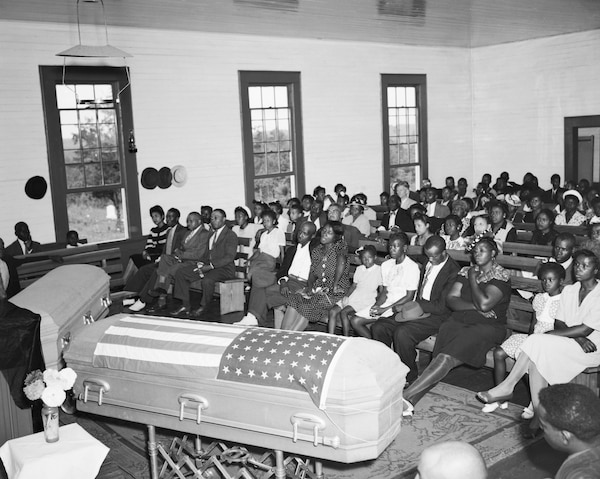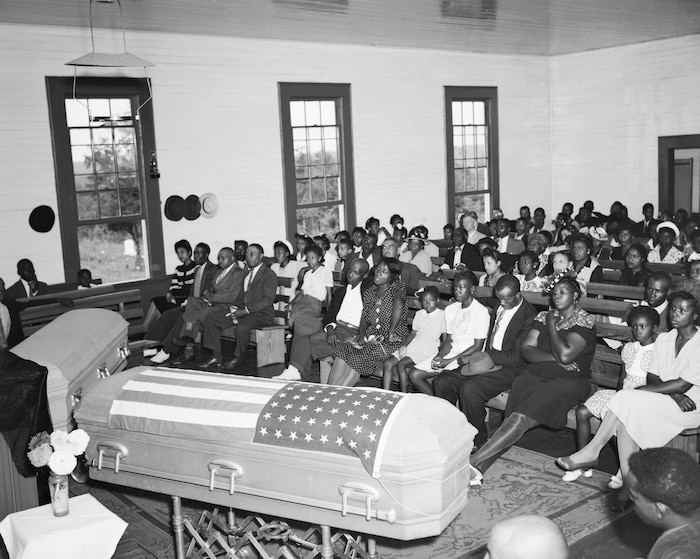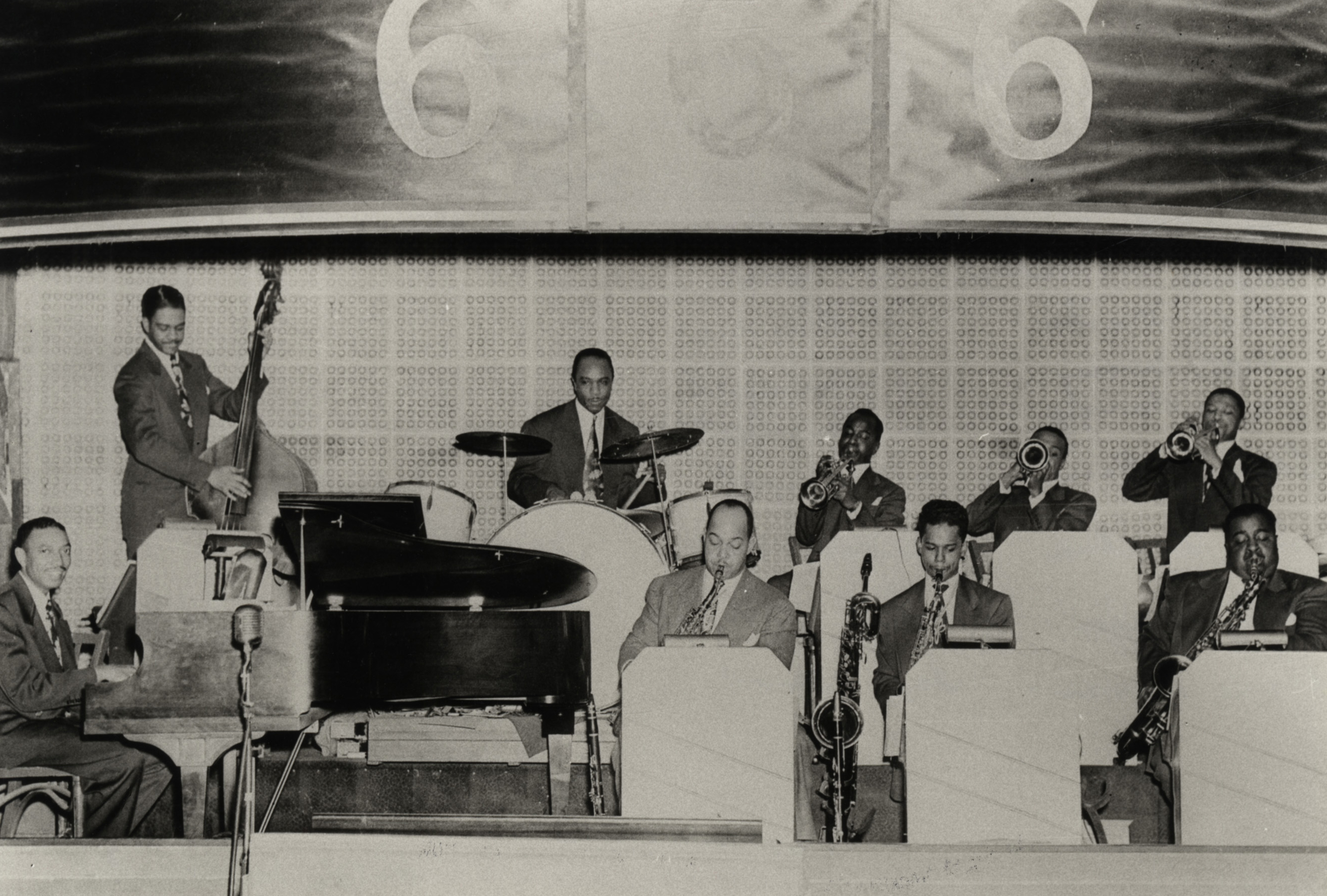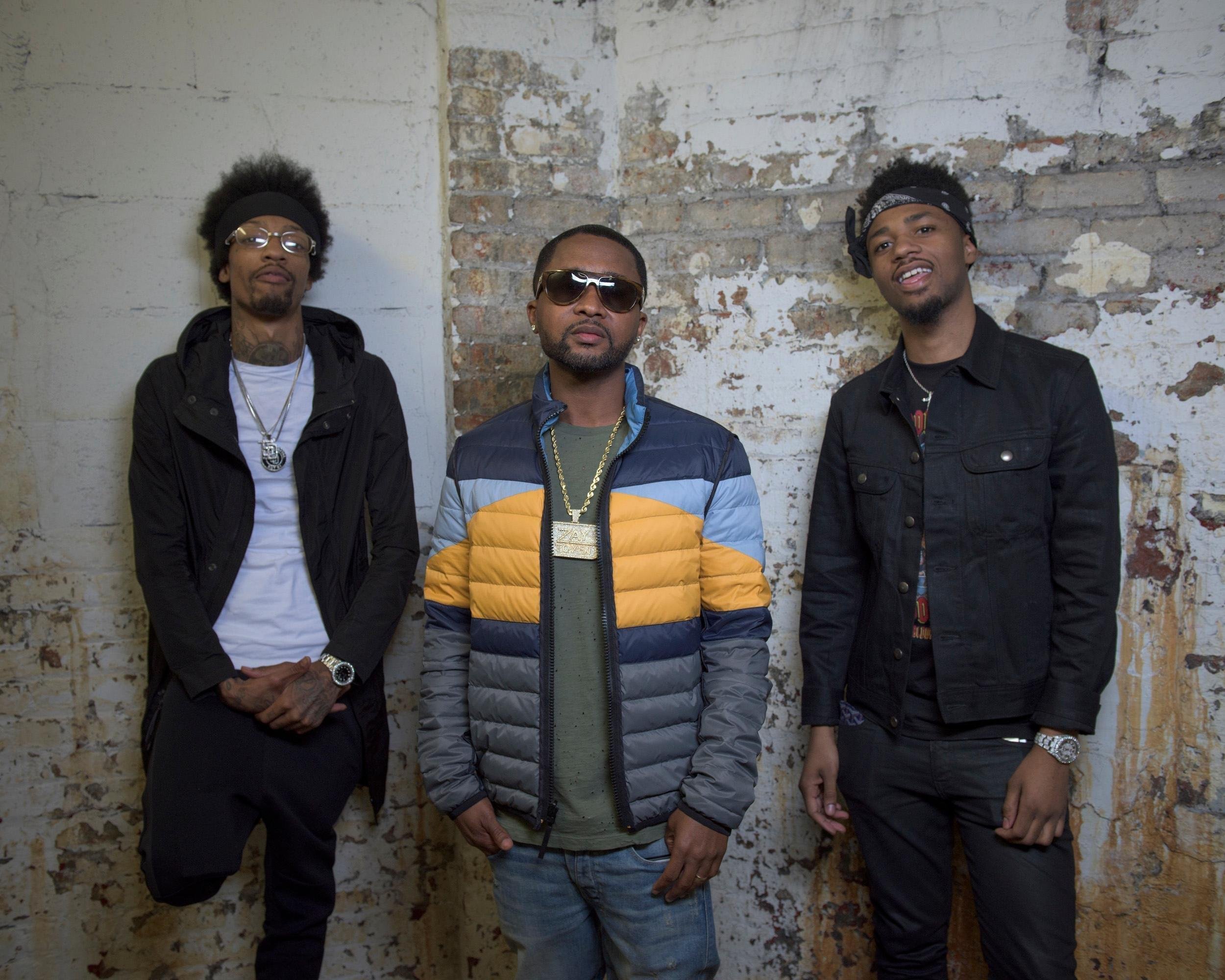Nightclubbing: Royal Peacock

Atlanta bluesman Julius High never lacked for nicknames. He first recorded for Diamond Records in 1963 under the name “Little” Julius, but the cover of “The Bachelor” gave lie to the moniker, promising 400 pounds of soul. The cover of a later record for Jet Stream – a caterwauling deep soul ballad “I Found Love” – promised an inflated 420 pounds of TNT. (High actually weighed closer to 300, a star football player forced to rely on his considerable vocal talent to make a living after his knee gave out.) The nickname that really stuck, though, was “Lotsa Poppa,” bestowed on him by Sam Cooke during a tour stop in Chicago. Lotsa Poppa won and then lost thousands from Cooke during pre-show dice games in the dressing room, studying Cooke as he sang and whispering the response to Cooke’s “Bring It On Home to Me” from the theater wings. In return, Cooke gave him the nickname that he sang under for the rest of his career.
Although he found this stage name on the road, Lotsa Poppa’s Atlanta bona fides were unimpeachable. Baptized by Martin Luther King Sr., he sang in King’s Ebenezer Baptist Choir through his early twenties. Early in his secular career, he ran with Lee Moses in the Showstoppers, the house band at the Royal Peacock club. He left Atlanta as Little Julius, returned to the Royal Peacock as Lotsa Poppa, and continued to warm up the house.
Known as Atlanta’s “Club Beautiful,” the Royal Peacock was the preeminent black club in the city during the 1950s and ’60s.
Known as Atlanta’s “Club Beautiful,” the Royal Peacock was the preeminent black club in the city during the 1950s and ’60s. To chart the constellations of artists who played the Peacock is to chart the firmament of black southern – which is to say, American – music. Miles and Dizzie; Muddy, B.B., and Howlin; Bobby “Blue” Bland, Little Willie John, Nina Simone, Sam Cooke. Nat King Cole played there before he started singing; James Brown before he was the Godfather; Jimi before the shredding, Otis Redding before Stax; Marvin Gaye before Motown, Gladys Knight when she was still a Pip.
And they weren’t just passing through – the club played host to career and genre-defining moments. It was in the wings of the Royal Peacock where, in 1951, Little Richard met his idol Billy Wright (“I thought he was the most fantastic entertainer I’d ever seen,”) and Wright divulged to Richard the name of his preferred stage makeup: Pancake 31. This exchange, and Wright’s continued encouragement and connections, helped propel Little Richard from gender-bending chitlin circuit performer to the greatest entertainer of his generation and the “architect of rock & roll.” Little Richard returned the favor to the Royal Peacock by describing the music spilling forth onto Auburn Ave as a sound that “regenerates the heart and makes the liver quiver, the bladder spatter and the knees freeze.”
Three years later, it was on the stage at the Royal Peacock that Ray Charles, tired of playing with pickup bands on the road, convinced Jerry Wexler and the rest of Atlantic Records A&R team that he should tour with his own band. "He took us across the street to a nightclub called the Royal Peacock – this was in the afternoon, and his band was sitting there, all ready to play, just sitting there in their chairs,” Wexler told Peter Guralnick. “And he went to the piano and counted off and they hit into ‘I've Got a Woman,’ and that was it." Playing gigs nightly with his band provided Charles and co. time in the juke joint laboratories of the country to test their alchemical fusion of gospel and blues. The next few years brought not just “I Got Woman,” but also “Mess Around,” What I’d Say” and the bedrock of American soul as we know it.
Lotsa Poppa, too, had a story of the club’s fabled pull. It was February 24th, 1964, and he was back at the Royal Peacock after returning from his tour with Cooke. Lotsa Poppa was first on the bill, standing just in front of the stage as was his custom, unleashing his gale-force singing. A former bandmate Marty Kearns said Lotsa Poppa “had the best scream of anyone I’ve heard, outside James Brown.” Solomon Burke, whose songs were fixtures in his repertoire, took to him: “I found him in Atlanta and I’m crazy about the guy,” Burke said. “Every time I’d see him I’d call him up on stage ’cause he was bigger than me and he made me look small.”
Sitting at one of the tables that lined the perimeter of the club was Muhammad Ali – then still Cassius Clay, then still the challenger for the heavyweight crown – his bout with Sonny Liston slated for the next night. Quiet as he kept it at the time, “It frightened me, just knowing how hard he hit,” Ali later admitted. The fighter, who was being torn to shreds in the white press for his braggadocio, was a jangle of nerves. In New York a few weeks before the fight, he visited the Sports Illustrated offices, looked down at the 6th Avenue traffic, and told writer Mort Sharnik, “I’m Christopher Columbus. I believe I’ll win. I’ve never been in there with him, but I believe the world is round and they all believe the world is flat. Maybe I’ll fall off the world at the horizon but I believe the world is round.”
Bluesmen are notorious exaggerators, but at least according to Lotsa Poppa, Ali steeled himself in the audience at the Royal Peacock.
Ali’s great challenge in the Liston fight was to harness all the anxious nerves – about Liston’s punch, about going public with his conversion to Islam, about garden-variety racism (Sonny was "the big Negro we pay to keep sassy Negroes in line" journalist Murray Kempton wrote of the fight). The line against Ali was so overwhelming bookies stopped taking bets on Liston. At the weigh-in, calling Liston "The Big Ugly Bear" and predicting he’d drop him in eight rounds, Ali’s blood pressure was so high that the doctor wanted to call off the fight unless he stabilized quickly. He had to channel that voltage, be its conductor, somehow direct it without diminishing it, make it dance, make it float. Bluesmen are notorious exaggerators, but at least according to Lotsa Poppa, Ali steeled himself in the audience at the Royal Peacock.
February 1964 represented a major threshold moment in US culture. The Beatles had visited Ali at the 5th Street gym in Miami after going on Ed Sullivan to introduce their white-washed Chuck Berry routine to US audiences. In the same show, Liston jumped rope to James Brown’s “Night Train.” Motown didn’t have a number one hit yet. Writer Steve Daugherty called the Royal Peacock of that era “an incubator for black music, keeping it hot and alive until it was allowed to be born, full-grown and screaming, into the midst of mainstream American pop. It’s taken over now. American music is black music.” It makes a certain sense then, that the night before Ali took his throne as the king of the world, he had a seat at the Royal Peacock, vibrating to Lotsa Poppa’s wail.
“SWEET” AUBURN AVENUE
To understand the Royal Peacock, you need to understand “Sweet” Auburn Ave., the stretch of Auburn northeast of downtown Atlanta featuring businesses, restaurants and nightclubs and known as the spiritual center of black Atlanta. And to understand Sweet Auburn, you have to go back to 1906.
Reconstruction-era Atlanta was seen as a “bastion of new south thinking,” as Gary M. Pomerantz wrote of it in Where Peachtree Meets Sweet Auburn, “which admitted blacks into the industrialized economy as brakemen on the trains, packers in warehouses and laborers in the manufacturing plants.” By the turn of the century there were 61 black-owned businesses in the city. But even though Atlanta seemed progressive relative to surrounding areas in the Jim Crow south, white supremacy was still the cornerstone of society and the Democratic party was a monolith in politics.
The “Gate City” wanted to think of itself as more progressive than it was, but the gubernatorial race in 1906 lay bare the violence underlying the status quo. White laborers felt threatened by the burgeoning black middle class, now competing with them for jobs in those plants, warehouses and trains and beginning to flex their political muscle. The two Democratic candidates each had control of a major Atlanta paper – Hoke Smith was the former owner of Atlanta Journal, Clark Howell the publisher of the Atlanta Constitution. Their campaign was a race to out-bigot the other. A typical headline supporting Smith read: “Disfranchise the negro is his appeal; vigorous appeal for white supremacy.” Howell wrote in the Constitution that “This is a white man’s country, and it must be governed by white men!”
Atlanta, the so-called progressive capital of the “New South” was a powder keg of Jim Crow hostilities.
Smith prevailed in August, but the white population’s racist sentiment remained. The papers continued to run exaggerated accounts of blacks assaulting white women, a surefire way to incite violence and lynching, and a tactic as old as white supremacy itself. That spring, a stage adaptation of Thomas Dixon’s The Klansman ran at the Atlanta Opera house. The novel, its stage adaptation and, most famously, its film adaptation as Birth of a Nation, played off exactly that imagined threat of black sexuality. Atlanta, the so-called progressive capital of the “New South” was a powder keg of Jim Crow hostilities.
A month after the 1906 election, newsboys streamed through Five Points, the major thoroughfare downtown, hawking an extra supplement to the evening paper. The only text above the fold read “THIRD ATTACK,” telling of another assault of a white woman by a black man that day. Additional headlines read: “Bold Negro Kisses White Girl's Hand!” “Bright Mulatto Insults White Girls!" Thousands of white Atlantans, leaderless, drunk and eager for an opportunity to act on their hate, stormed into black neighborhoods. Rebel yells and hollers to "Save the women, kill the blacks," went up in neighborhoods across the city. The sheriff vowed such protection, even if it was required to “kill every negro in a thousand miles of this place.” Such exercises of white power were as predictable as they were horrific as they were immune from punishment. The riots lasted three days, and though the numbers are disputed, at least 25 black people were killed and hundreds more injured.
It was on Auburn Avenue that they dreamed – and sought to make real – a better life.
The riot and its aftermath formalized segregation in the city. And, as Pomerantz writes, “the unspeakable horror of the 1906 race riot lurked in the recesses of black families in Atlanta for generations” and “prompted many small black-owned businesses to relocate from the central business district to the security of their own race on Auburn Avenue.”
And there, black businesses thrived. Located within blocks of each other was what the unofficial mayor of Sweet Auburn, John Wesley Dobbs, called the “Three Legged Stool” of black finance: the Citizens Trust Bank, Mutual Federal Savings and Loan and Atlanta Life Insurance, the last run by Atlanta’s first black millionaire, Alonzo Herndon. Fortune magazine called it “the richest Negro street in the world.” Across from the neo-classical columns of the Atlanta Life building was the country’s longest running black paper, the Atlanta Daily World. Three blocks down was Ebenezer Street Baptist, founded in 1886 and pastored by Martin Luther King Sr., and Jr., the latter born in the parish house nearby.
Pomerantz writes that “Dobbs believed there was magic in Auburn Avenue, especially in that two-block stretch between Piedmont Avenue and Butler Street. When Blacks spoke of Auburn, that’s what they meant: the barbershops, shoe shine stands, churches, clubs and small businesses between the Rucker building and the Yates & Milton drugstore... To walk the Avenue on any summer evening was to experience the vitality of black life in the city: the sounds of ragtime from the Top Hat, the smell of fried chicken from Ma Sutton’s and the constant hum of animated street chatter. It became the place for black dreamers.” It was there that they dreamed – and sought to make real – a better life. Both the Southern Christian Leadership Conference and the Student Nonviolent Coordinating Committee, the two major forces in civil rights movement organizing, operated out of offices on Sweet Auburn.
There were other clubs on Sweet Auburn, but they called the Royal Peacock “Club Beautiful” for a reason.
It was onto this scene that Carrie Cunningham rode on a white horse. Her parents were freed slaves who had raised her outside Fitzgerald, Georgia, and as a young woman, Cunningham left home to join the Silas Green Show as a circus rider. The Silas Green Show was a major circus, travelling across the country with a 16-piece band and a main tent that could hold 1,400 spectators. Muddy Waters briefly joined the Show, as did Bessie Smith. The group was so popular that Jet Magazine once called it “almost as much a part of southern culture as collard greens and barbecue ribs.” Cunningham eventually left the show, still on horseback, and headed for the city. Her next venture would prove even more pivotal.
She made money for a spell renting rooms on Decatur, and in 1937 she put it toward the purchase of the hotel on the upper floors of the Citizens Trust Bank on Auburn. Renamed the Hotel Royal, it flourished in the center of black life in Atlanta and was a refuge for those African-Americans travelling in the Jim Crow south. Of the seven listings for Atlanta in the 1950 Negro Motorist Green Book, an essential guide for black travellers seeking friendly lodging and restaurants, five were on Auburn Ave., including Cunningham’s Royal Hotel.
Cunningham’s son, Red McAllister, was a saxophone player and bandleader, time and again running into trouble on the backroads of the chitlin circuit. Her solution to the worry, stress and the frequently posted bail for her son was to buy the Top Hat Club at 186 Auburn Ave. She paid $31,000 for it in the spring of 1949 and closed the club briefly for renovations. It reopened in October of that year as the Royal Peacock, its entire facade draped with peacock feathers.
The club’s swank decor reflected the owner’s personal style – flashy jewelry, bespoke dresses. Little Richard remembered her wearing diamonds in her teeth: “I’d never seen that before and it was really amazing to me,” he wrote in his autobiography. She was more than flash, though. An Atlanta Daily World society column wrote that Cunningham “is always on the go and she fits right into Auburn Avenue’s program.” That was true in every sense – Cunningham was active in the civil rights movement, joining the NAACP in 1942 and consistently hosting meetings at her properties. She was close friends with Dr. Martin Luther King Jr.; meetings of the SCLC and SNCC would often adjourn to the Royal Peacock.

During the 1946 National Baptist convention, held in Atlanta that September, Cunningham took several visiting ministers from Pennsylvania to the site of the murder of two black couples, George W. and Mae Murray Dorsey, and Roger and Dorothy Malcom, who were pulled out of their car on a back country road and gunned down by a mob of white men, known as the “Georgia Lynching of 1946.” One of the visiting ministers is quoted as saying “We are here for we believe that these four victims did not die in vain, for their death has set in motion a movement that will bring greater justice to all humanity.” It is in the shadow of these murders that Cunningham bought the club in order to keep her son closer to home.
Red managed the club and, through his day job running a talent agency, booked the acts. Cunningham ran the hotel and brought her clout to bear on the club. Between her entrée into entertainment circles from her days with the Silas Green Show, her ability to provide comfortable and safe accommodations and her son’s own connections, they were able to book the acts that kept the house packed.
A packed house at the Royal Peacock meant a line stretching back up Piedmont, under the neon of the club’s marquee, up the 32 steps above Auburn, and through the door for a $3.50 cover. It meant packed four-top tables around the one long room’s perimeter, folks climbing onto them to catch a glimpse of the bandstand at the back to put a face to the soon-to-be-famous voice, or eye the between-sets boa dancing on the dancefloor at center. There were other clubs on Sweet Auburn, but they called the Royal Peacock “Club Beautiful” for a reason. Ms. Cunningham set the precedent with her peacock jewelry, lavish dresses and cool demeanor. Plus, Sam Cooke was liable to stop by your table before his set, and you wanted to look the part.
The Royal Peacock closed its doors in 1973, the same year Carrie Cunningham died (although she no longer owned the club by then). But even without Cunningham at the helm, the Peacock had kept Sweet Auburn at a boil through the 1960s. Sam Cooke played one of his last shows at the Royal Peacock at the end of 1964, before being gunned down in a California motel. It became a destination for fame, not just a developer of it. Aretha Franklin, a star by the time she steady-rocked the Royal Peacock, said the club was “as hot as it could get.” The Peacock was so prominent, it drew comparisons to the Apollo in Harlem. But as Delois Scott, Cunningham’s granddaughter who grew up in the club, told Georgia Music’s Candice Dyer, “The Peacock was the Peacock and the Apollo was the Apollo.” It was too deeply rooted in southern sounds and experiences to settle for a reputation secondary to what was happening in New York
Like too many other American neighborhoods, Sweet Auburn succumbed to the urban decay of the 1970s. The “Downtown Connector,” which merged the I-75 and I-85 freeways and gave easy access to neighborhoods further west, cut Sweet Auburn in half. But the Royal Peacock hung on. It’s housed everything from a theater company to a hip-hop club, and most recently re-opened as a reggae club in 2010 – still bearing the name Cunningham gave it (as well as a peacock feather mural on the stairway walls). And though you are more likely to hear Barrington Levy leaking out onto Sweet Auburn than James Brown, the club offers occasional reminders of its outsized influence.
In 1998, when Outkast needed to visually fuse that “space-futuristic shit” with the “Broughams, 30s, and Impalas pimp shit” into a video for “Rosa Parks,” Andre 3000 led a marching band down Sweet Auburn and did his verse in front of the Royal Peacock while wearing a catcher’s chest protector. Yung Joc, whose snap anthem “It’s Goin’ Down” spent eight weeks at the top of the R&B/hip-hop chart in 2006, was signed to Bad Boy South after a performance at the Royal Peacock. As Joc told Prefix that year: “So one night I’m doing the Royal Peacock and he called me and said “I’m gonna be there tonight.” He said, “If you come out with you’re ‘A’ game, it shouldn’t be nothing to worry about.” And that’s what happened. Two days after that I was signed.”
110 summers after the Atlanta race riot left more than 20 black Americans killed in cold blood, 70 summers after the Georgia lynchings and during the week that a Baton Rouge police officer killed Alton Sterling and a Falcon Heights police officer killed Philando Castile, Black Lives Matter protesters gathered in downtown Atlanta to march to Piedmont Park.
The route crossed Auburn Ave. a few blocks west of the Royal Peacock. One protester, in the group of hundreds that marched down four lanes of traffic, held a sign with an amended quote from poet Claudia Rankine: “Because white men can’t / police their imagination / black men and women are dying.”
Later that night at the Royal Peacock, after an all-female neo-soul group finished and before the late night crowd arrived for the reggae night, as the band broke down their gear and the DJ started to spin, the trumpet player hopped off the stage and wandered out onto the red and black squares of the empty dance floor. Playing only for himself – there was hardly anyone there for whom to play – playing for the sake of playing, the trumpeter started soloing over Determination’s “Too Much Oppression.” They were short, lyrical, breathy runs, a moment – across genres and generations – of loneliness and beauty, lasting just a few bars. It was about the bluest thing you could imagine.
The Royal Peacock did much more than simply helping to encourage the transition from blues to R&B and blues to rock and soul. The Royal Peacock cultivated black spirituality, justice, wealth, love and imagination. And it did so in a city and country that consistently struggles to value black humanity, much less the multifaceted genius the Royal Peacock housed and sent forth.
In its own way, it still does the same today.

